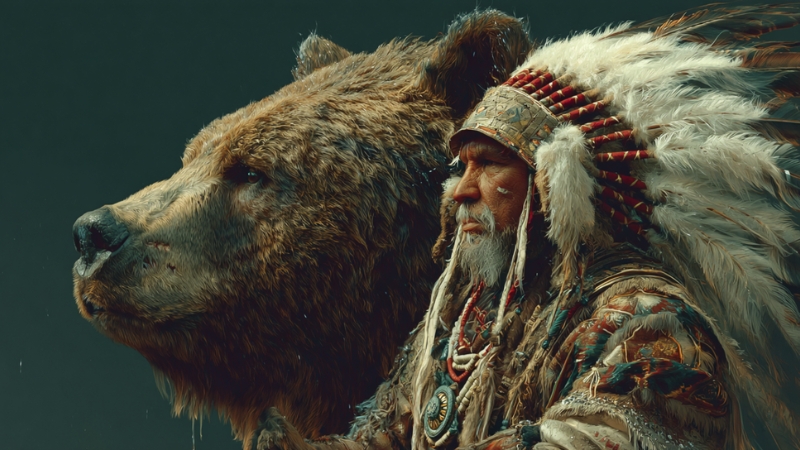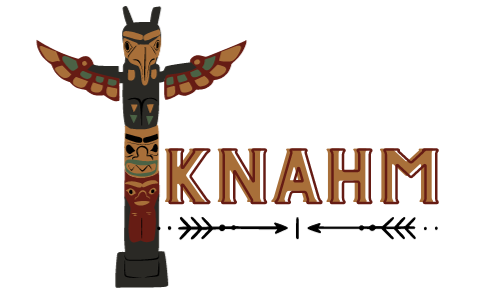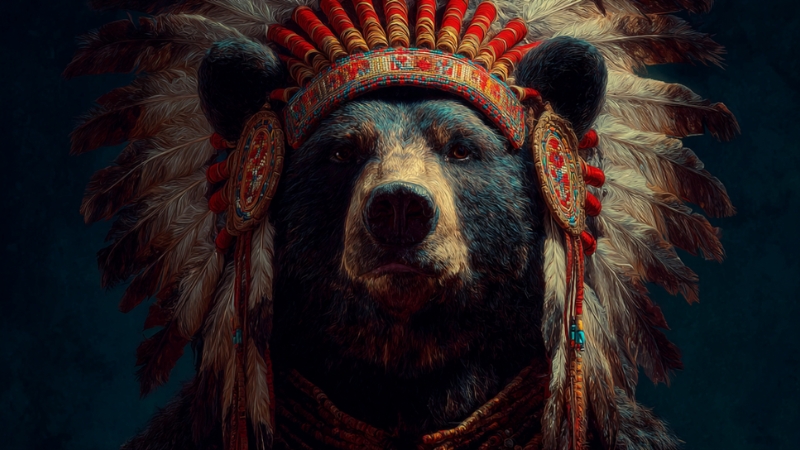In Native American traditions across North America, the bear is far more than a creature of the forest. Known in the Lakota language as Mato, the bear represents strength, healing, protection, and deep spiritual connection to the earth.
For centuries, Native peoples have revered the bear as a powerful relative, a guardian spirit, and a teacher whose cycles of life mirror the rhythms of nature itself.
Unlike Western symbolism, which often reduces animals to metaphors, Native American belief systems view the bear as part of a living spiritual ecosystem. The bear is not just a symbol but a being with wisdom, presence, and lessons for human communities.
Bear in Lakota and Plains Traditions

Among the Lakota Sioux, the bear holds a sacred place as a healer and protector. Stories describe Mato as possessing both physical strength and spiritual power, with the ability to ward off evil and sickness. Medicine men often sought visions of bears, drawing upon their spirit in healing rituals.
Lakota warriors also respected the bear’s ferocity. Wearing bear claws or painting bear tracks on shields was believed to transfer courage and resilience in battle.
The bear, a creature that fights fiercely yet retreats to heal in solitude, became a model for both warriors and healers.
For the Lakota, the bear also connects directly to the land. Bears dig into the soil for roots, berries, and herbs, linking them to medicinal plants and the healing powers of Mother Earth.
Bear Medicine and Healing Practices
One of the bear’s most important roles in Native American traditions is its association with medicine.
- Bear Medicine Bundles: Healers carried claws, fur, or teeth in bundles used in ceremonies to call upon the bear’s power.
- Healing Plants: The bear was believed to know the uses of roots and herbs. Observing bears digging and chewing plants inspired tribal healers to discover medicinal properties, including treatments for wounds and fevers.
- Dreams and Visions: A bear appearing in a dream or vision quest was a profound sign, often marking someone as a healer.
The bear embodies both the wounded healer and the protector of the sick. Just as a bear retreats into a den during hibernation to emerge renewed, healers saw illness and recovery as cycles of transformation.
The Bear in Clan Systems
Many Native nations organize society into clans, each linked to a sacred animal. The Bear Clan is among the most widespread across North America.
Nation
Bear Clan Role
Responsibilities
Ojibwe (Anishinaabe)
Guardians of medicine and healing
Protect the people, oversee medicinal knowledge
Haudenosaunee (Iroquois Confederacy)
One of the key clans in governance
Represent strength and responsibility in the council
Lakota Sioux
Symbolic spiritual protectors
Linked to courage and resilience in warfare
Cherokee
Bear Clan held judicial and healing roles
Often consulted in matters of justice
In these clan systems, the bear is not just symbolic; it defines lineage, social responsibility, and collective identity.
Spiritual Meaning: Cycles and Earth Connection
The bear’s life cycle resonates deeply with Native cosmologies.
- Hibernation as Renewal: The bear’s winter hibernation is understood as a death-and-rebirth process. Emerging in spring symbolizes renewal, healing, and the return of life.
- Solitude as Strength: The bear’s solitary nature represents introspection and self-reliance, qualities valued in vision quests and personal spiritual growth.
- Earth Connection: Bears dig into the ground for food and denning, linking them to the earth element. For many tribes, this makes the bear an intermediary between humans and the earth’s healing powers.
The bear’s presence is also tied to balance, strength tempered by wisdom, aggression tempered by healing.
Bears in Oral Traditions and Myth
Stories about bears vary across tribes but often emphasize their dual role as protectors and teachers.
- Among the Cree, the bear is often portrayed as a spirit that can both punish disrespect and reward humility.
- In Cherokee tales, the bear is connected to transformation myths, sometimes seen as humans who chose to take bear form.
- For the Lakota, Mato appears in stories of medicine men who gain healing powers after bear visions or encounters.
These stories function as more than myths; they transmit knowledge about how to live in harmony with nature and respect spiritual powers.
The Bear in Modern Native Identity
View this post on Instagram
Today, the bear remains a central figure in Native culture. Bear imagery appears in powwow regalia, beadwork, and ceremonial dances. Many Native people identify with bear totems or continue to belong to Bear Clans.
The bear also appears in activism and cultural revitalization. For instance, some Indigenous communities use the bear as a symbol of environmental protection, linking traditional beliefs about the bear’s role as earth guardian to modern ecological struggles.
Comparative View
It’s important to note that while nearly all tribes revere the bear, its meanings can differ.
Region
Main Attribute of Bear
Plains Tribes (Lakota, Cheyenne)
Warrior strength and healing
Great Lakes (Ojibwe, Potawatomi)
Medical knowledge and protection
Southwest (Pueblo, Navajo)
Spiritual guardian, associated with directions in ceremonies
Pacific Northwest
Wealth, leadership, and family protection
These variations show the adaptability of bear symbolism to different environments and traditions.
Conclusion
@thelegendaryarchives What is the Bear in Native American Folklore? #mythology #tiktok #fyp #fypシ゚viral #foryourpage #top #nativeamericanfolklore #nativeamericanmythology #mythological #mythicalcreature #nativeamerican #foryou #bear ♬ original sound – The Legendary Archives
The bear, or Mato, continues to stand at the heart of Native American beliefs. As a healer, a warrior, and a bridge to the earth, the bear embodies lessons of resilience, renewal, and respect.
Just as feathers carry powerful meanings of honor, prayer, and spiritual connection, Mato symbolizes the deep ties between strength and the sacred.
Its role in clan systems, oral traditions, and medicine practices reflects how deeply Indigenous cultures understood the interconnectedness of human life and the natural world.
In a modern context, Mato still inspires Native communities to uphold values of strength, healing, and protection of the land. The bear is not just a relic of ancient belief; it is a living presence in ceremony, identity, and environmental guardianship.
To speak of the bear in Native traditions is to speak of a timeless relationship between people, animals, and the earth, one that continues to shape how Indigenous nations honor their ancestors and guide future generations.

